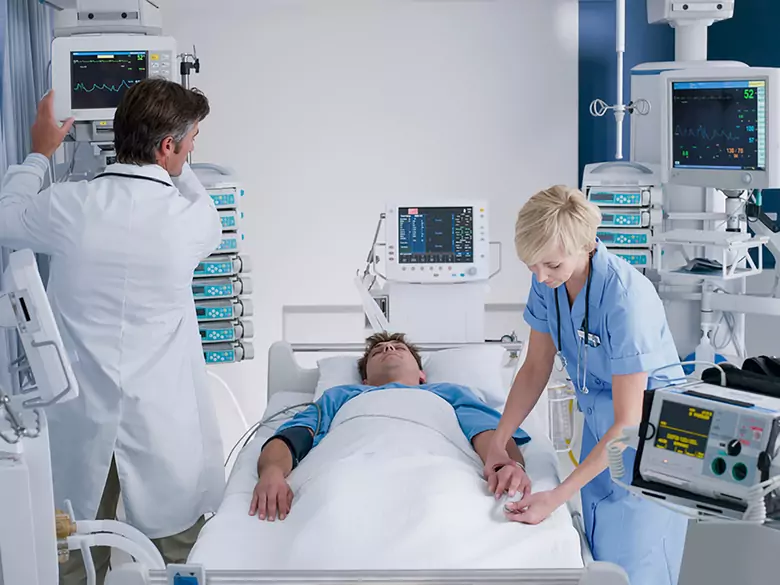Third part of an article discussing various urinary tract examinations and the basic principles of interpreting the results of these examinations. The most important imaging examinations such as medical US, urography, cystography, computed tomography and scintigraphy are discussed. In addition, the principles of renal biopsy are presented.
Medical US of the urogenital system
Ultrasound examination of the urinary tract is a non-invasive examination that is easy to perform and provides a wealth of important information regarding the urinary tract:
- structure of the kidneys (their number, size, position within the abdominal cavity, shape, proportion of the kidney cortex to its medulla, presence of cysts, urine stasis within the renal pelvis - obstruction to the outflow of urine from the kidney, presence of stones)
- the ureters - only the ureteral orifices to the bladder and the subpelvic sections of the kidney are correctly visible,
- bladder - its shape, size, urine filling, presence of abnormal structures within the bladder walls.
The child for examination should have a well-filled bladder
X-RAY OVERVIEW of the bladder
Currently used to assess the presence of possible calcifications within the urinary tract - corresponding to stones, visible as clearly demarcated shadows projecting into the kidneys (the examination should be correlated with the Medical US result).
MICTURITION CYSTOGRAPHY
The examination allows the diagnosis of a congenital urinary tract defect, which is vesicoureteral reflux (outflow). Under normal conditions, urine flows from the kidneys to the bladder through the ureters and is passed outwards through the urethra. On urination, the ureteral segments running in the bladder wall close and the urethral outlet opens.
In the case of vesicoureteral reflux, the intramural section does not close and urine flows under pressure out of the bladder simultaneously through the urethra and back to the kidney through the unclosed ureter. This can, especially with the coexistence of a urinary tract infection, cause kidney damage and loss of function.
Micturition cystography involves injecting a contrast medium through a catheter inserted into the bladder and taking 2 images - 1. when the bladder is maximally full, in infants we are guided by the X-ray view, the older child reports a feeling of pushing, and 2. after urination to assess the retention of contrast in the bladder.
The examination can be supplemented by oblique examinations especially in boys when a posterior urethral obstruction is suspected (this is a fold of mucosa that partially closes the urethra and prevents proper urination causing an increase in urinary pressure).
The child does not need to have any special preparation for the examination - only on the day before the examination and for the next few days should they receive a urinary tract disinfectant (Furagin) in a therapeutic dose. The examination must not be performed during a urinary tract infection.









